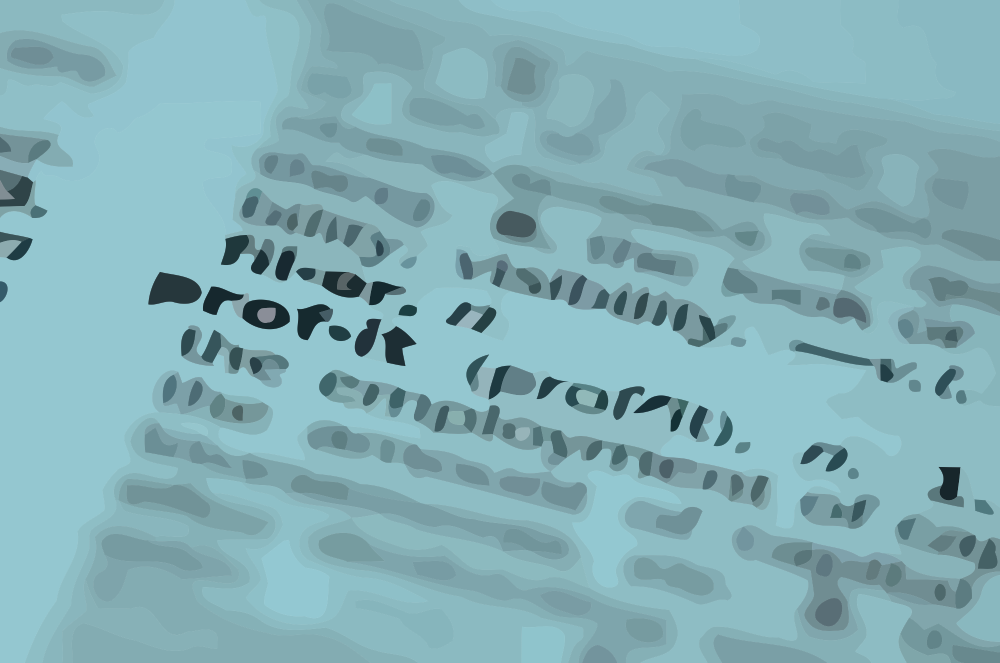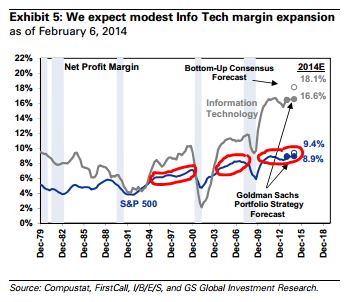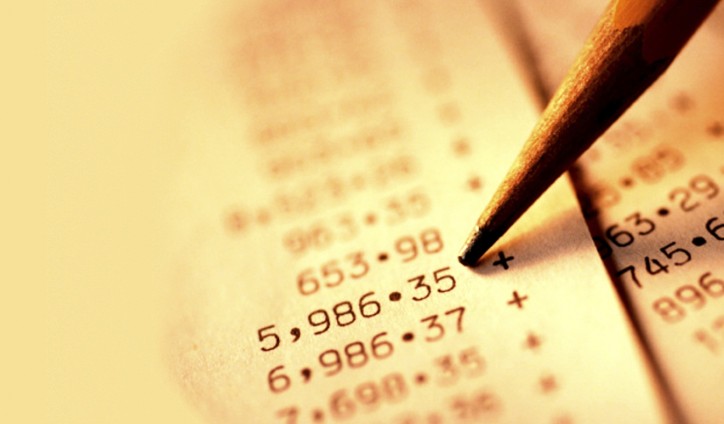James Montier of GMO, whose work I deeply respect and enjoy reading, recently put out a white paper defending the Shiller CAPE from some of the attacks that have been waged against it. He offered a number of strong arguments. In this post, I want to focus on one argument in specific: the argument that because many valuation metrics, in addition to the Shiller CAPE, are sending signals of extreme overvaluation, that the signals are more likely to be accurate.
John Hussman makes a similar argument. In a recent weekly comment, he put all of the metrics together onto a single chart:
The suggestion is that these “independent” metrics, by speaking together in unison, bolster the reliability of the extreme overvaluation call. But if you examine the metrics closely, you will notice that each of them conducts some kind of profit margin “normalization”, whether directly or indirectly. Each metric therefore hinges on the assumption of profit margin mean reversion: the assumption that average profit margins in the future are going to be substantially lower than they currently are. What happens if this assumption turns out to be wrong? It’s been wrong for awhile now–if you use the profit margin that actually counts, the S&P 500 profit margin, and bracket out brief recessionary periods (after which any contractions have been quickly undone), it’s been wrong for almost 20 years.
Suppose that the White Queen were to come down right now and tell us that 10 years from now, in 2024, the S&P 500 profit margin was going to be pretty close to where it is today–say within 100 bps of the current value. Would these metrics, with their “independent” signals, be of any use in predicting subsequent S&P 500 returns? Not at all. They would all fail together, because they would all be wrong on that one crucial issue–the issue of profit margins.
The market sets prices based on how forward earnings actually look in the present, given the present trend, not based on how they would look under a set of countertrend, counterfactual assumptions. If profit margins 10 years from now end up roughly where they are now, then assuming no changes in the P/E multiple, the total return will simply be the nominal sales (nGDP) growth plus the shareholder yield (dividends plus buybacks net of dilution). For our low growth environment, we might conservatively estimate 4% to 5% for the nominal sales growth (this estimate would include a year or two of mild recession some time in the next 10 years), and 2% to 3% for the shareholder yield, to produce an annual total return of 6% to 8%. This return, if produced, would be perfectly healthy, normal, respectable, indicative of a market that’s appropriately priced, not a market at a valuation extreme.
Now, what I’m saying here isn’t just conjecture: all of the metrics did fail together, when applied in a similar manner in the last cycle. As we can see in John Hussman’s chart, ten years ago, in early 2004, the metrics all showed an extremely overvalued market–ranging anywhere from 50% to 100% overvalued. But the actual long-term return that was produced from early 2004 to now was quite healthy–more than 7% per year. And that was with the ugliest recession since the Great Depression sandwiched in the middle, depressing the sales and nGDP growth rates.
Why the miss? Valuation bears will blame it on the fact that the current market is heavily overvalued, and that the overvaluation has caused the returns from 2004 to now to be artificially high. But this point begs the question. The market is only heavily overvalued if the metrics are calling things correctly. Are they?
The market is priced at roughly 17 times trailing earnings–hardly an extreme. The reason that the metrics missed has nothing to do with any abnormality in that multiple, and everything to do with the fact that profit margins didn’t mean-revert as assumed. Using S&P’s operating earnings compilation, at the end of the 1st quarter of 2004, the S&P 500 profit margin was just under 8.0%. Instead of falling back to 5.5%, or to wherever the long-term historical average is, it actually rose. With the fourth quarter of 2013 now complete, the profit margin is 9.6%–a new record high. The profit margin increase (from 8.0% to 9.6%) offset the contraction in the P/E multiple (from 20 to 17) to produce a net total return of around 7%.
It’s a mistake, then, to think that these normalized metrics somehow provide “independent” confirmation of each other’s accuracy. In essence, they are all the same metric, expressed in different formulations. What we have in the valuation debate are two metrics–one metric, with many different permutations, that will only work if profit margins fall significantly over the next several years, and another metric, with one permutation, that will only work if they don’t.
Now, to be fair, valuation bears may end up being right in their overvaluation call. Profit margins may fall significantly from here, leaving behind an extremely expensive market. If that happens, they will get the last laugh–and they will deserve it. But they are mistaken if they think that this call is backed by multiple “independent” sources. It is not. It hinges on a single macroeconomic thesis–a thesis that, so far, has not worked out, that could easily continue to not work out, and that if it doesn’t work out, will drag the entire edifice down with it.
In valuation-themed posts that follow, I intend to drop the corollary discussions about the Shiller CAPE and focus directly on this one issue, profit margins, the epicenter of the valuation debate. I encourage valuation bears to do the same. Let’s get to the point. If profit margins are going to fall significantly over the next several years, I want valuation bears to convince me of it now, so that I can prepare for the inevitable downside. And I hope the same is true in the other direction: that if profit margins are not going to fall, or that if they are only going to fall moderately (my base case), or–heaven forbid–if they are actually going to keep rising from here (a possibility), that valuation bears would want me and others to convince them of it now, so that they can restore their equity exposures to normal, or at least get more comfortable with the idea of buying the dips and corrections that this bull market offers going forward.


















